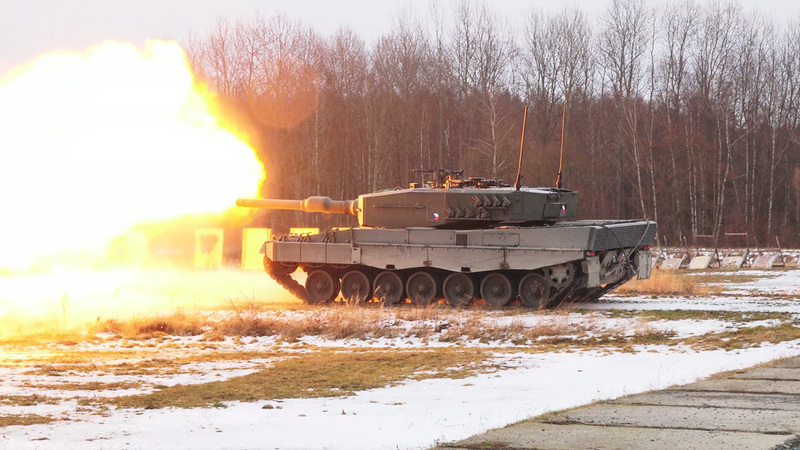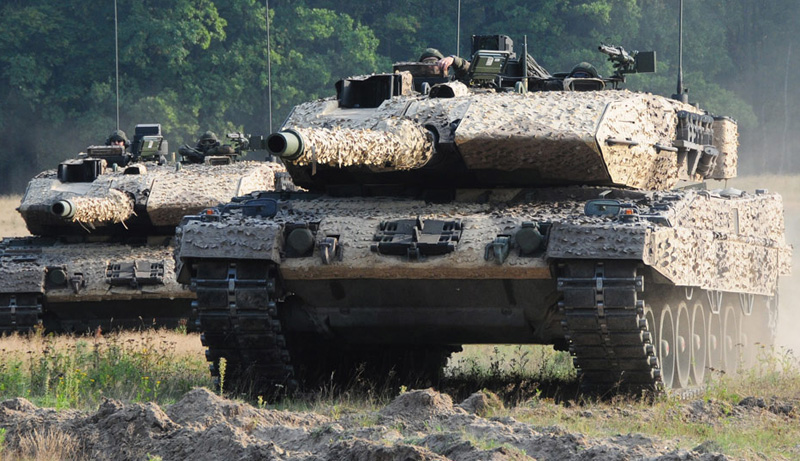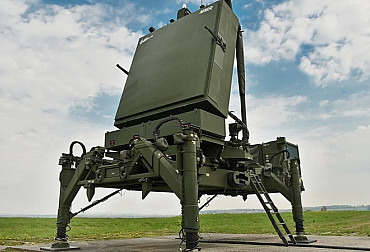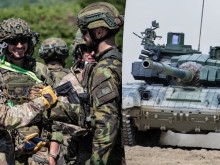The Czech Armed Forces may receive up to 122 Leopard 2 tanks in total
The Czech Armed Forces may receive up to 122 Leopard 2 tanks in total. The Ministry of Defence continues to negotiate the joint purchase of Leopard 2A8 main battle tanks with Germany. Following the announcement in February that the Czech Republic will receive an additional 14+1 2A4 tanks from Germany, and that the government will be able to buy another 15 on favourable terms, it is timely to look again at the possibilities that a theoretical total of up to 122 Leopard 2s will bring, and what this may mean for the future structure of the 7th Mechanised Brigade.
According to the announcement of the Minister of Defence Jana Černochová at the press conference after the government meeting (21 February this year), Germany paid for the first batch of 14 Leopard 2A4 tanks, which have already been introduced into the armament of the 73rd Tank Battalion, and one Büffel recovery tank (in the first phase loaned by the Bundeswehr, later replaced by a donated unit) a total of almost 200 million euros including VAT (about 5 billion crowns). The Czech side's cost was only the installation of communication systems and the addition of a fire protection system. This year's announced donation of the same number and type of vehicles is expected to cost slightly more than 200 million euros. "The amount that we would pay for the fifteen tanks, the other tanks, so that we would have 45 of them, would be the same amount that the Federal Republic of Germany pays," said the defence minister, adding that their life cycle would be provided by the Czech defence industry.

The interest in a larger number of 2A4 Leopards was already expressed last December at the 35th meeting of the House Committee on Defence by the Chief of the General Staff of the Army, Lt. Gen. Karel Rehka: "For us it is definitely a strengthening of capabilities. Even the biggest sceptics and critics who looked at it as an old tank and had some concerns, after the tanks were introduced, they started to train on them and tested the capabilities of the tank, they see it very positively (...) For all these reasons, I welcome it very much, and on the contrary, even in the war army, in the reserves, etc., if I had more of these Leopards 2A4 in the army, we would be very happy about it."
At least 28+2 of these tanks the Army already has, or will receive in the near future, and this is a number that basically corresponds to the total long-term number of upgraded T-72M4 CZ tanks (the Army has a total of 30 of these in its inventory, including three command tanks, and also has three VT-72M4 CZ recovery tanks). These vehicles are undergoing technical evaluation at the state enterprise VOP CZ and the battalion will get them back in 2026. In addition to these, and also as a replacement for the vehicles undergoing maintenance and modernisation, the army uses the original T-72M1s, which normally form the armament of the battalion's active reserve company. If the government proceeds with the purchase of a third batch of Leopard tanks, on paper there will be a virtual doubling of the number of tanks, even before the coveted 2A8 Leopards come into service. According to Jana Černochová, the second and possible third deliveries of 2A4 Leopards should arrive in the Czech Republic later this year or in the first half of next year. At the recent 37th meeting of the Defence Committee, General Rehka spoke explicitly about the retirement of T-72 tanks of all versions on the condition that Leopard 2A4 tanks in a total number of 42 units (+3 recovery tanks) will be accepted into the armament of the Czech Armed Forces, supplemented in the future (in 2027-2030) by up to 77 new Leopard 2A8 tanks - such an option he described as optimal from the point of view of the Czech Armed Forces.
At the aforementioned press conference, Minister Černochová also stated, "(The interest in the Leopards 2A4) is huge, because for the Czech Republic it would mean that we would be moving from the Soviet equipment, even though we know that the modernised T-72 tanks were then produced in Czechoslovakia under licence, so that we would actually be abandoning this platform and moving to a more modern platform." Indeed, the transition from the existing T-72s to Leopards 2, albeit in an older variant, would have been greatly accelerated by the acquisition of 42+3 units, and the subsequent transition to the modern 2A8 Leopards would have been smoother, although there are quite significant differences in the design of the 2A4 version (over and above originally sourced from Switzerland under the Panzer 87 designation) from Rheinmetall, and the 2A8 directly from the manufacturer, which is the Munich-based Krauss-Maffei Wegmann (KMW).
At the same time, there are also concerns about whether, due to the considerable pressure on the defence budget, despite its jump to 2% of GDP (of which approximately half is for investment), the fact that we now have 45 modern vehicles (plus 30 T-72M4 CZs worth a billion) will lead to a postponement or significant reduction of the plan to acquire Leopard 2A8 tanks, due to some kind of "satisfaction": "...we will discuss the acquisition of new tanks as a government this year. In the meantime, we are doing research to acquire something that will fully meet the requirements of our army, our soldiers. If we acquire the Leopard 2A8 tanks, we have one platform, which is a huge advantage," Jana Chernochova said, adding that the upgraded T-72s "we will keep for now" and the unmodernised tanks could be sent to Ukraine. This makes sense from the Ukrainian point of view, as the upgraded T-72M4 CZs are very specific and the whole project is struggling with a lack of spare parts, so this type of tanks would be more of a gift to Ukraine, certainly a logistical burden.
The continued interest in buying 61-77 Leopard 2A8 tanks in six variants was explicitly confirmed by the representatives of the Ministry of Defence at the 37th meeting of the Defence Committee. Going straight to the option exercise and counting a total of 77 vehicles, the combat and command tanks would account for 58 units. The remaining 19 units are specialised versions (bridge, recovery, engineer and driver training). In the current structure of the 73rd Battalion there are three professional companies of ten tanks each (command + 3 platoons of three vehicles each) and an active reserve company with also ten tanks. With the transition to the new armament will come the transition to the so-called four-man formation common in NATO armies, where each company should have two command tanks and three platoons of four vehicles each. The numbers of donated (and possibly purchased) Leopard 2A4 tanks already correspond to this logic.

The projected number of 58 Leopard 2A8 battle and command tanks thus allows for arming four tank companies with two vehicles for the battalion headquarters. It has been suggested previously that the new 4th Company could be specifically designed for the Medium Brigade Task Force (based on the 4th Armoured Brigade), and the importance of main battle tanks to the Medium Brigade concept was confirmed by General Rehka at the March Defence Committee meeting. Similarly, the 42 Leopard 2A4 battle tanks will enable the arming of three additional tank companies. Thus, if the option is exercised, it can be assumed that the 73rd Battalion will move to a NATO-standard structure, and will be supplemented by 2-3 AZ companies with Leopard 2A4s, or these tanks will be stored for mobilization reserve needs. Upgrading of these machines is then envisaged. This will ideally bring the tanks up to 2A8 version status, but this would be a very complicated process and would entail considerable costs. Depending on the possibilities of future defence budgets, alternative solutions may take the form of partial modernisation, strengthening of turret armour, upgrading of optics and sensors, possible replacement of the main weapon (L/44 with L/55) or use of an active protection system.
In any case, the German donation and purchase of 15 more older Leopard 2A4 tanks is a certain way to speed up the whole process of rearmament to Western technology, as the Leopard 2A4 will allow full training of four-man crews of future new Leopard 2A8 tanks (as opposed to three-man crews of T-72 tanks), as well as the transition to a four-man configuration and related changes. At the same time, the rearmament of the tank battalion by 2025 will allow at least partial fulfilment of the commitment to a heavy brigade task force (the BVP will come later than originally intended). Although the total number of Leopard 2s is theoretically up to 122, given the intention to move to a NATO structure, this number is not sufficient to create a second battalion, about which there has already been some speculation. All usable remaining T-72M1 tanks are then expected to be delivered to Ukraine as soon as possible, and specific T-72M4 CZs are likely to be preserved and stored as a mobilisation reserve.





















